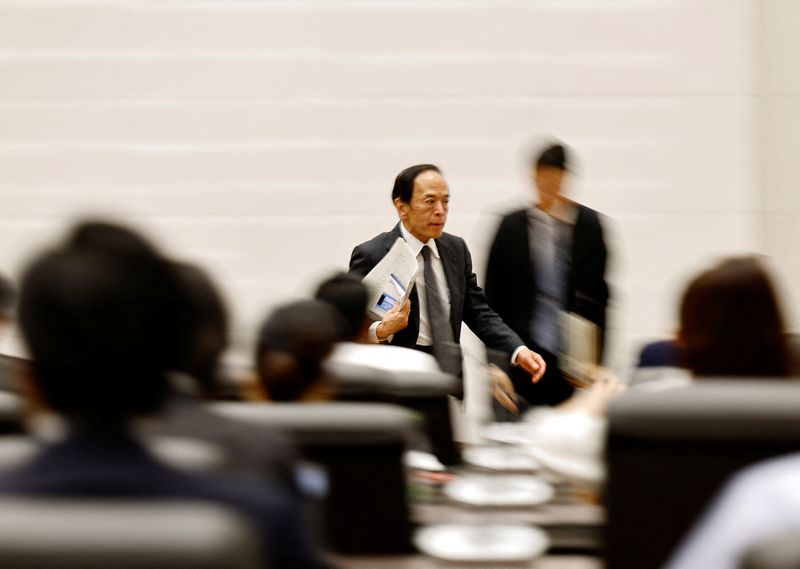Bank of Japan to outline bond taper plan, debate rate hike timing
2024.07.30 18:22
By Leika Kihara
TOKYO (Reuters) – The Bank of Japan is expected to detail plans to taper its huge bond buying on Wednesday and debate whether to raise interest rates, signalling its resolve to steadily unwind a decade of massive monetary stimulus.
The decision comes as the U.S. Federal Reserve looks to cut interest rates, possibly as early as September, reversing an aggressive rate-hike cycle that drove up the dollar and caused a painful yen sell-off for Japan.
At the two-day meeting ending on Wednesday, the BOJ will decide on a quantitative tightening (QT) plan that will likely halve monthly bond buying in 1-1/2 to two years’ time – a pace roughly in line with broad market forecasts.
The board will also debate whether to raise short-term rates from 0-0.1%, which could be a close call as policymakers remain split on how long they should scrutinise data before pulling the trigger.
Japan’s economy is at an inflection point with inflation holding above the BOJ’s 2% target for well over two years and workers getting their biggest base pay hikes in three decades.
But rising living costs have hurt consumption, pushing the economy into contraction in the first quarter and casting doubt on whether households can swallow further price increases.
While many market players expect the BOJ to hike short-term rates to 0.25% this year, they are divided on the exact timing.
More than three-quarters of economists polled by Reuters on July 10-18 expect the BOJ to stand pat on Wednesday. Markets are pricing in a 64% chance of a 10 bps hike.
The BOJ ended negative rates and bond yield control in March in a landmark shift away from its radical stimulus programme.
Governor Kazuo Ueda has said the BOJ will hike rates further if it becomes convinced that rising wages will prop up services prices, and keep inflation durably around its 2% target.
With steady inflation keeping real borrowing costs low, the BOJ will likely drop signs that it is on course for a steady rate hike path through 2026 – regardless of whether it hikes rates this month.
Such clues, or guidance on the future rate hike path, will likely come from Ueda’s post-meeting briefing or a quarterly outlook report due after the meeting.
In the report, the BOJ will likely roughly maintain its projection made in April that inflation will stay around its 2% target in coming years, sources have told Reuters.
The BOJ’s decision will come hours before that of the Fed, which is likely to hold rates steady but signal its readiness to reduce borrowing costs as soon as September.

The yen’s recent rebound from 38-year lows, driven by expectations of narrowing U.S.-Japan interest rate gap, may affect the BOJ’s rate hike timing, some analysts say.
While the BOJ insists it does not use monetary policy to affect currency moves, rising concerns over a weak yen have prompted some calls from government and business leaders for the central bank to speed up its shift away from near-zero rates.








